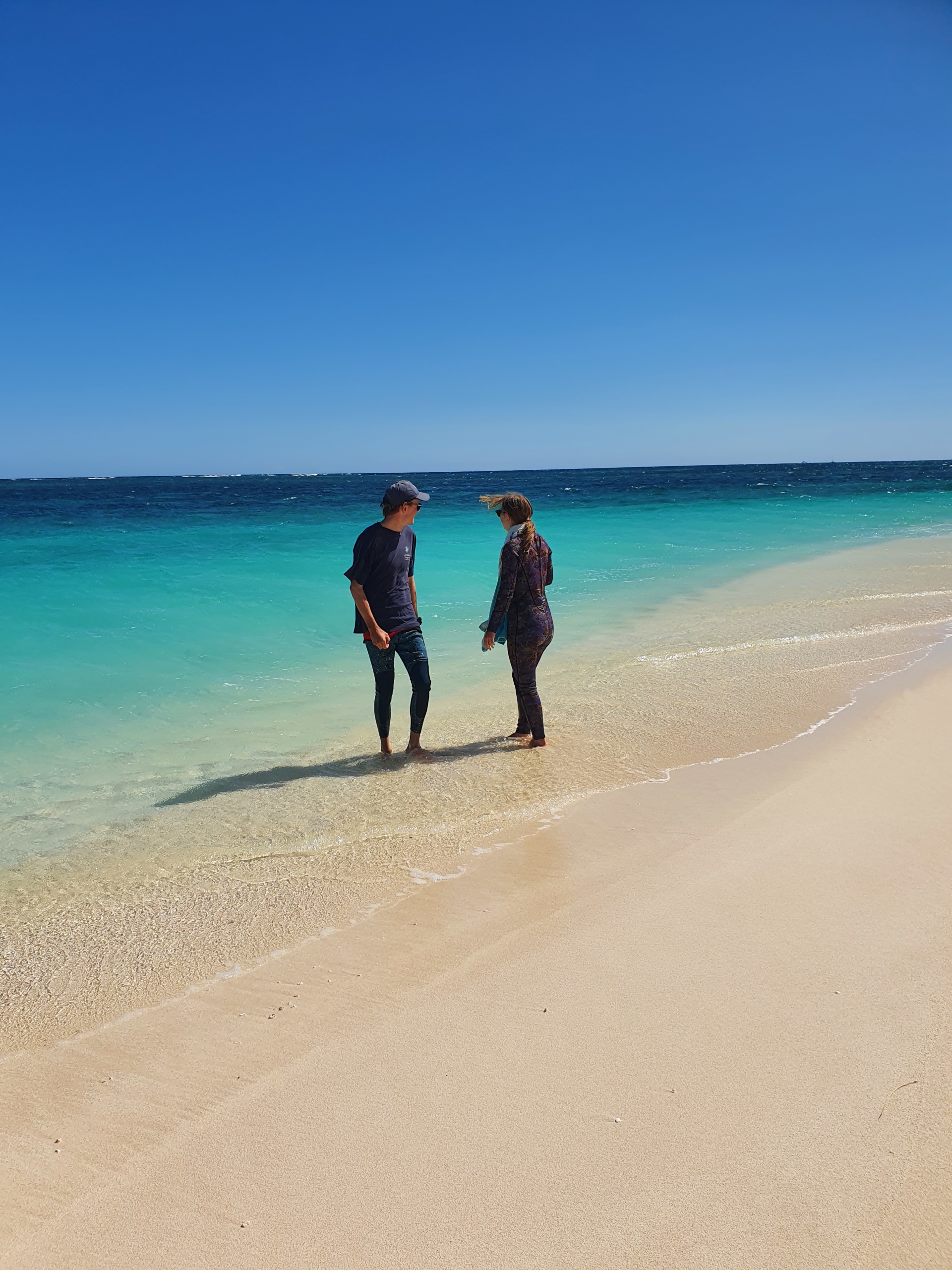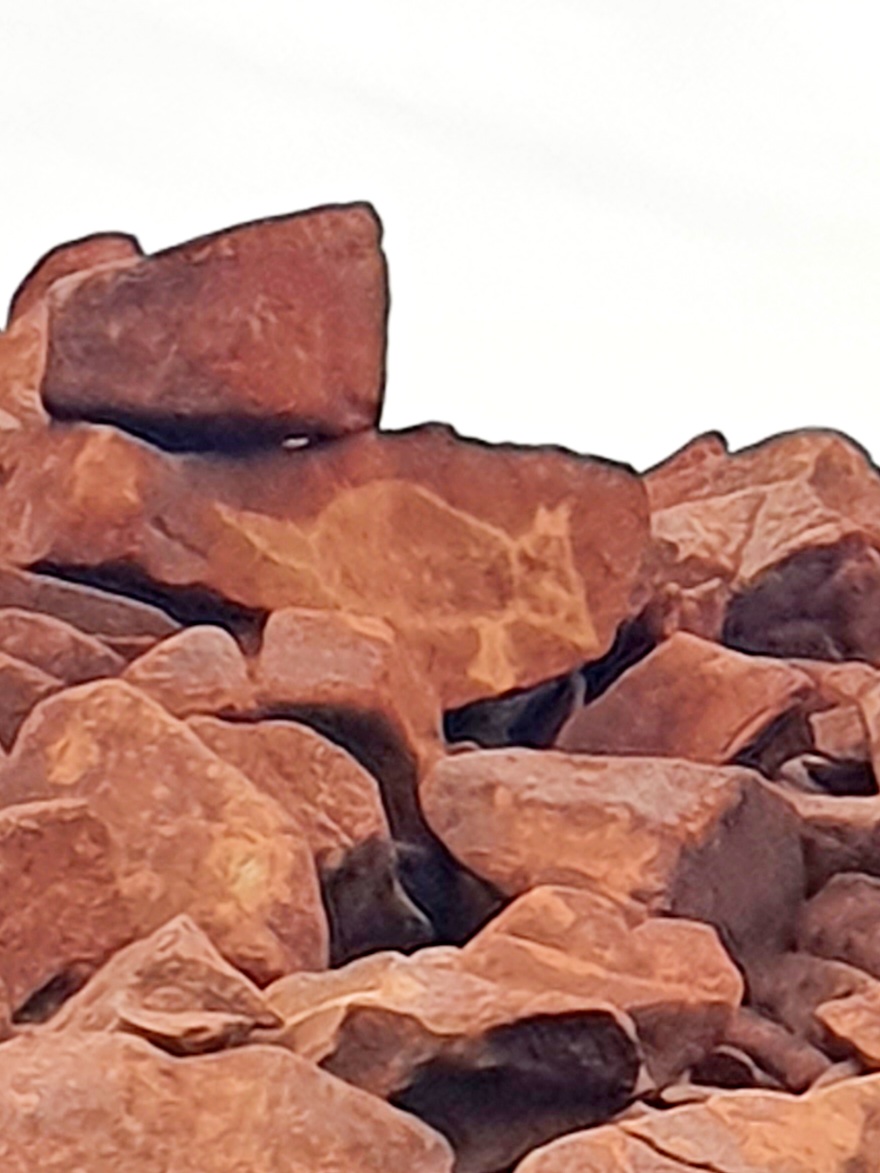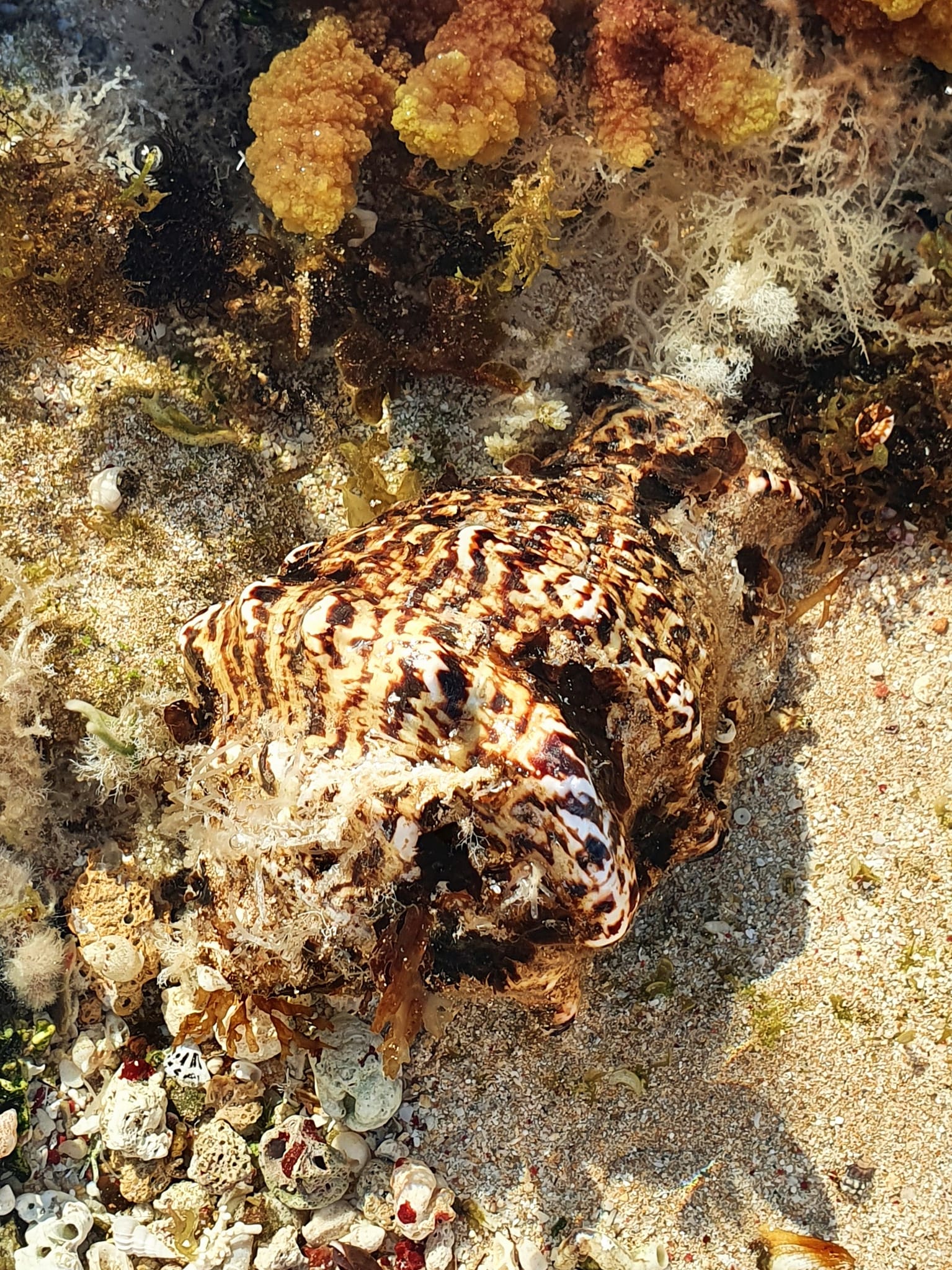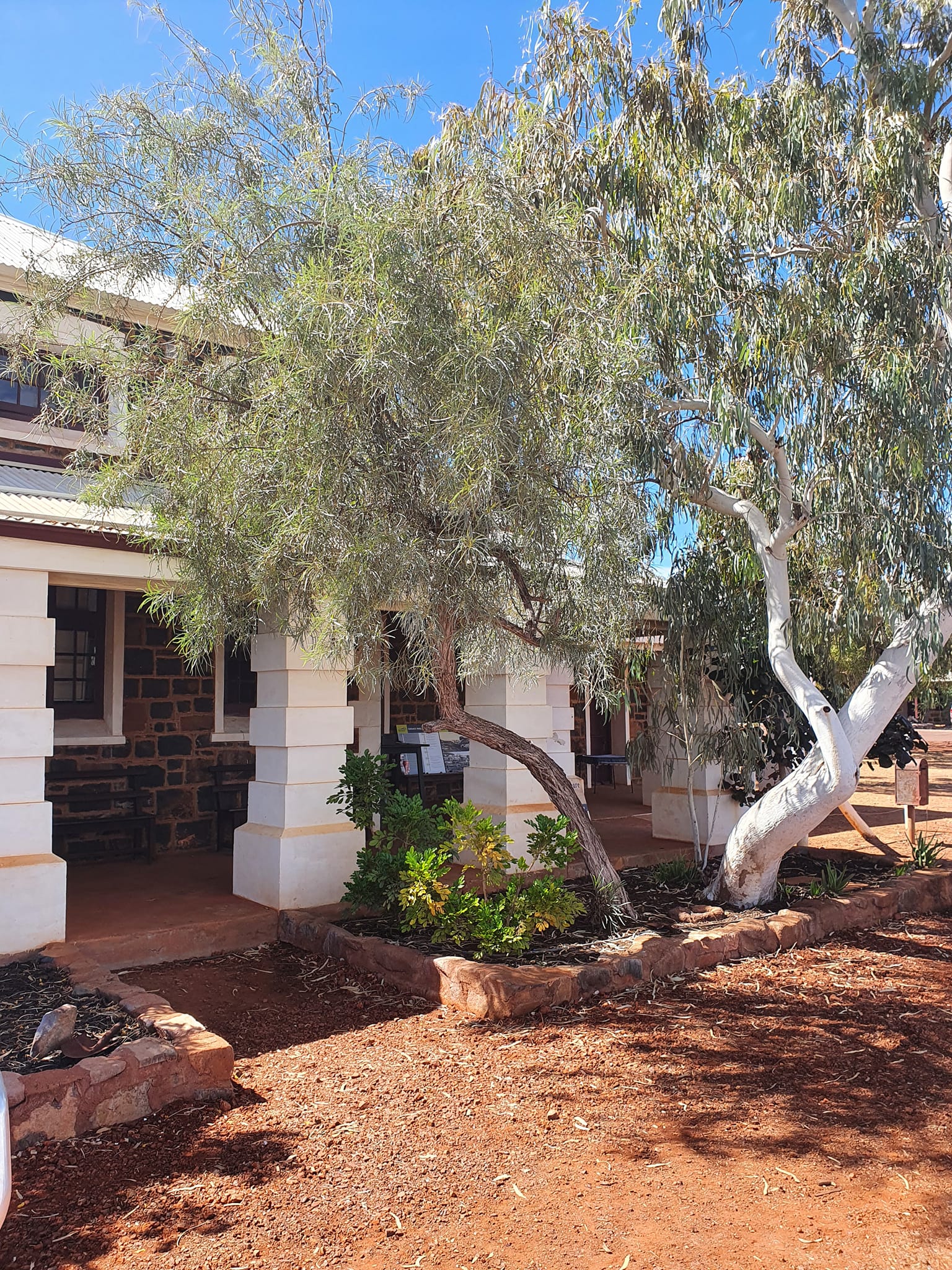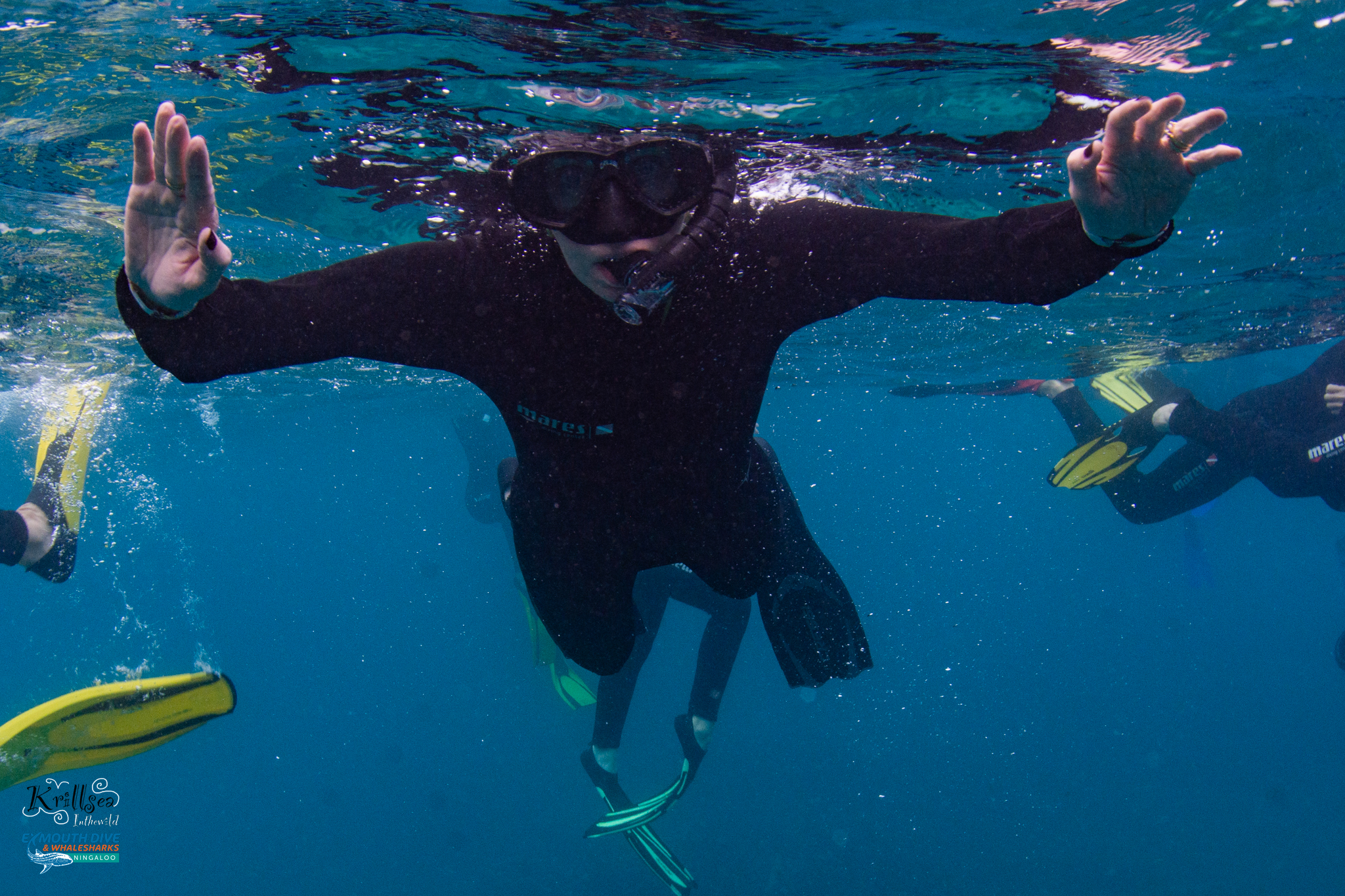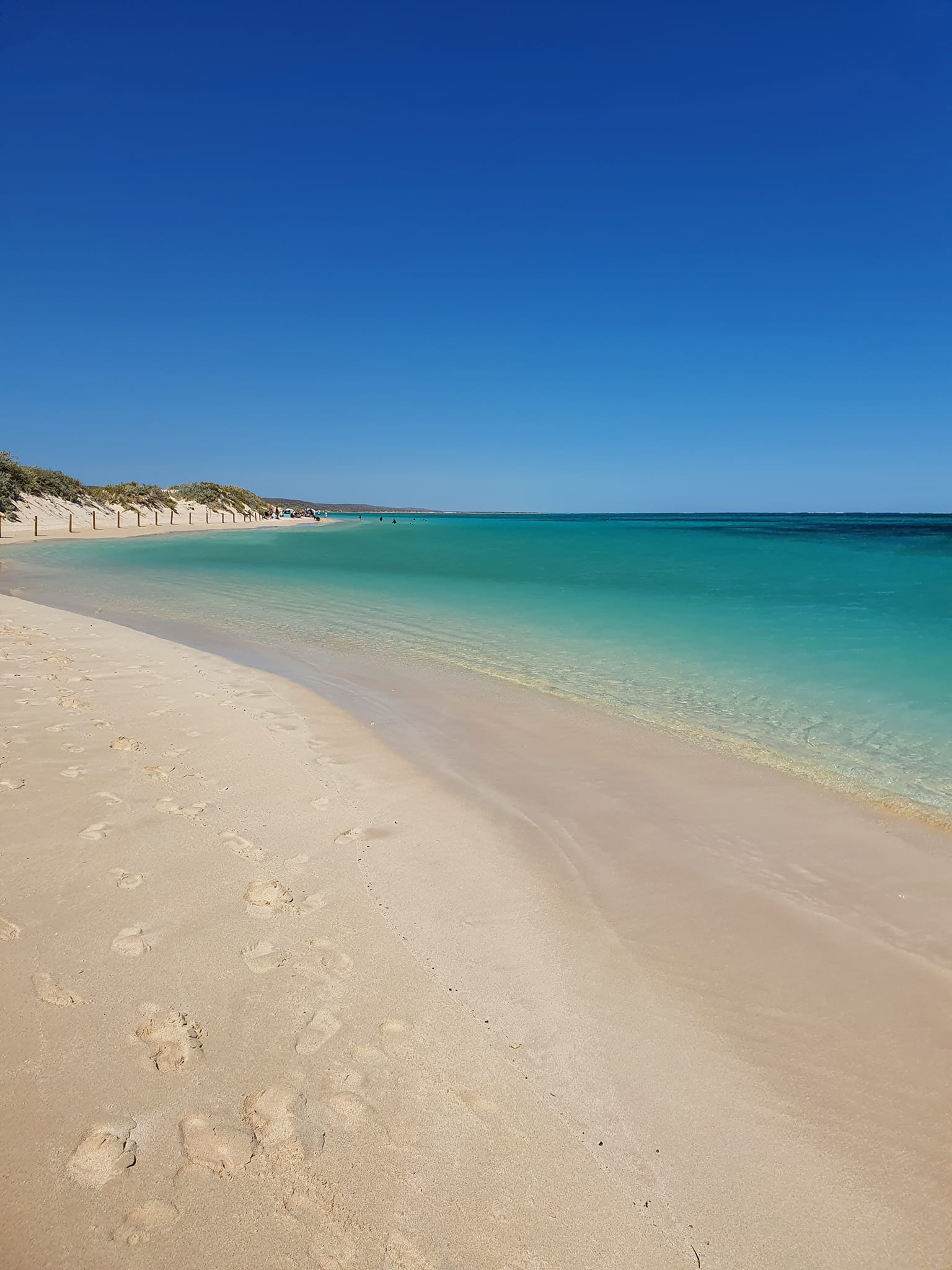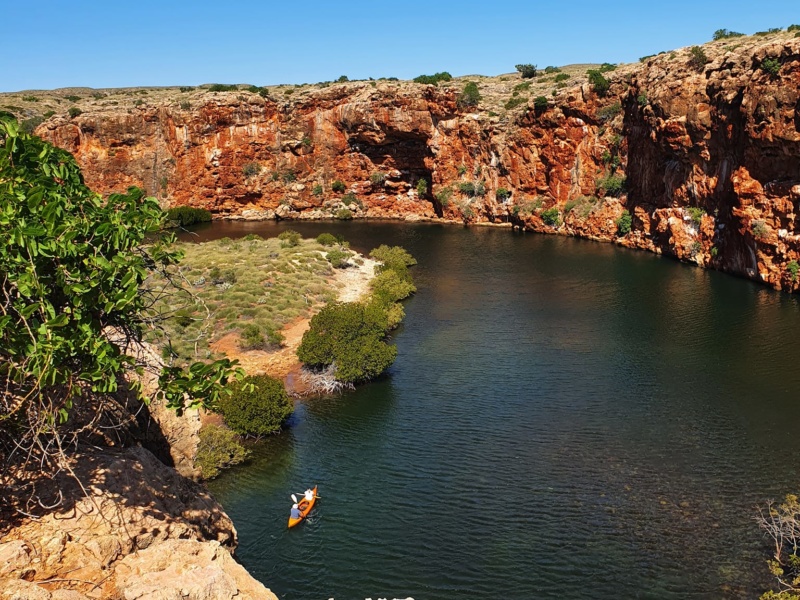The Pilbara region of Western Australia is remote, even by Australian standards, and it takes a day to travel there from Sydney with connecting flights from Perth. A COVID lockdown had stopped us visiting in 2021, but nothing was going to stop us in 2022! We left a wintery and drizzly Sydney in the morning and arrived nine hours later to a blissful warmth and cerulean blue skies.
Flying into Karratha I was amazed at the topography of the region-deep red earth, with the iron-ore rich Hammersley Ranges to the south, etched with eucalypt lined rivers and the brilliant blue of the Indian Ocean with the Dampier Archipelago to the west. We flew over the patchwork-like Dampier Salt Flats on our descent as the late afternoon sun shimmered on the coastal mudflats.
Karratha and its surrounds is home to iron ore loading facilities, the aforementioned saltworks, one of the largest fertilizer plants in the world and Australia’s largest liquefied gas plants. In contrast it is also home to the world’s largest concentration of indigenous rock art, located on the Burrup Peninsula, and around forty coral fringed islands that make up the Dampier Archipelago. It has a rich indigenous culture as well as beautifully preserved colonial architecture. Something for everyone!
We headed to the Yaburara Heritage Trail, a selection of shortish walking trails on the hills behind Karratha. A steep climb to about 120m took us through tufts of spinifex grass, wildflowers and low scrub to a lookout with superb views over Karratha and the coast. We discovered ancient indigenous petroglyphs on some of the rocks and were glad we had chosen a cool morning for our walk as even in winter it can get up to 30 degrees Celsius.
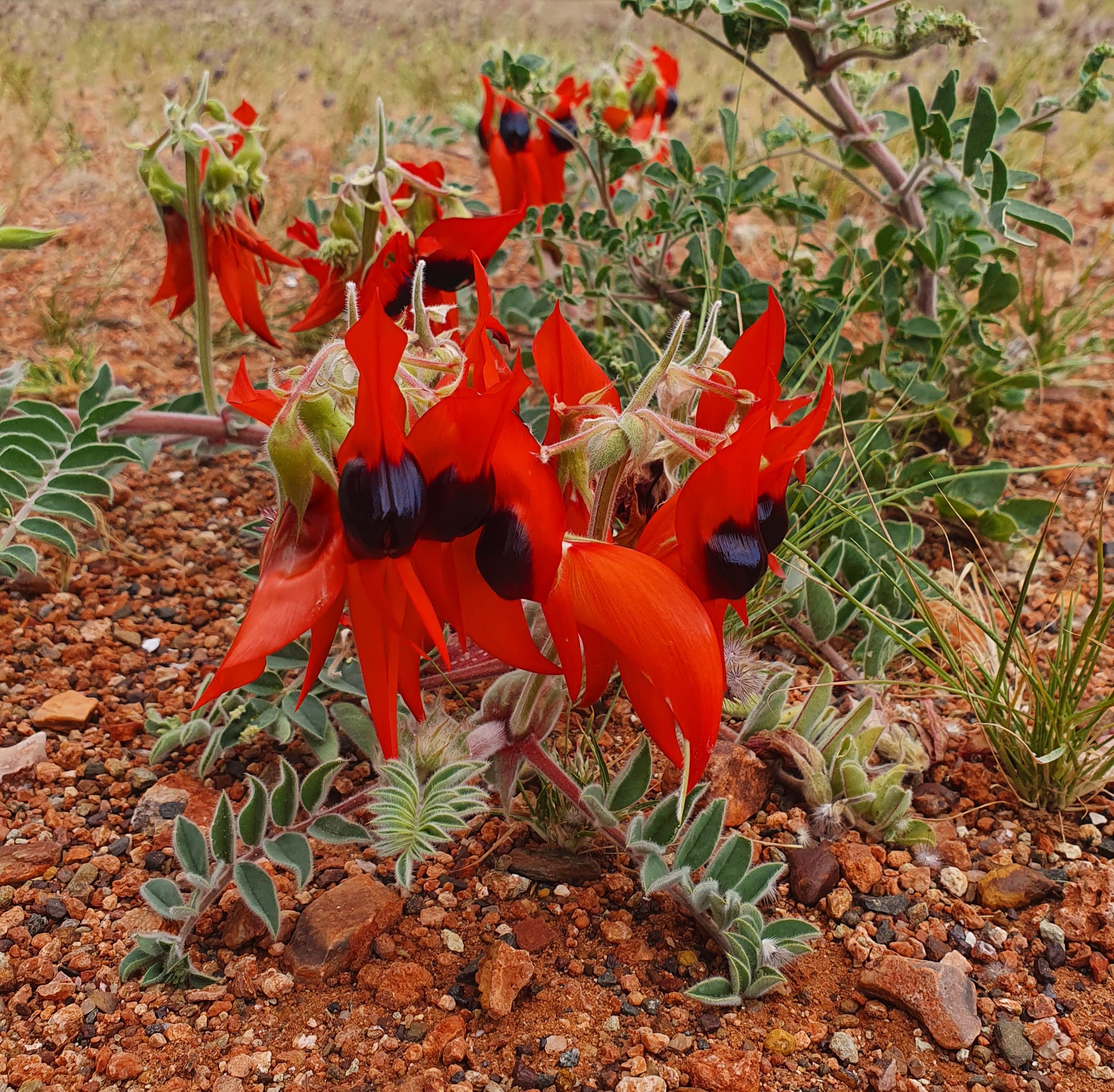
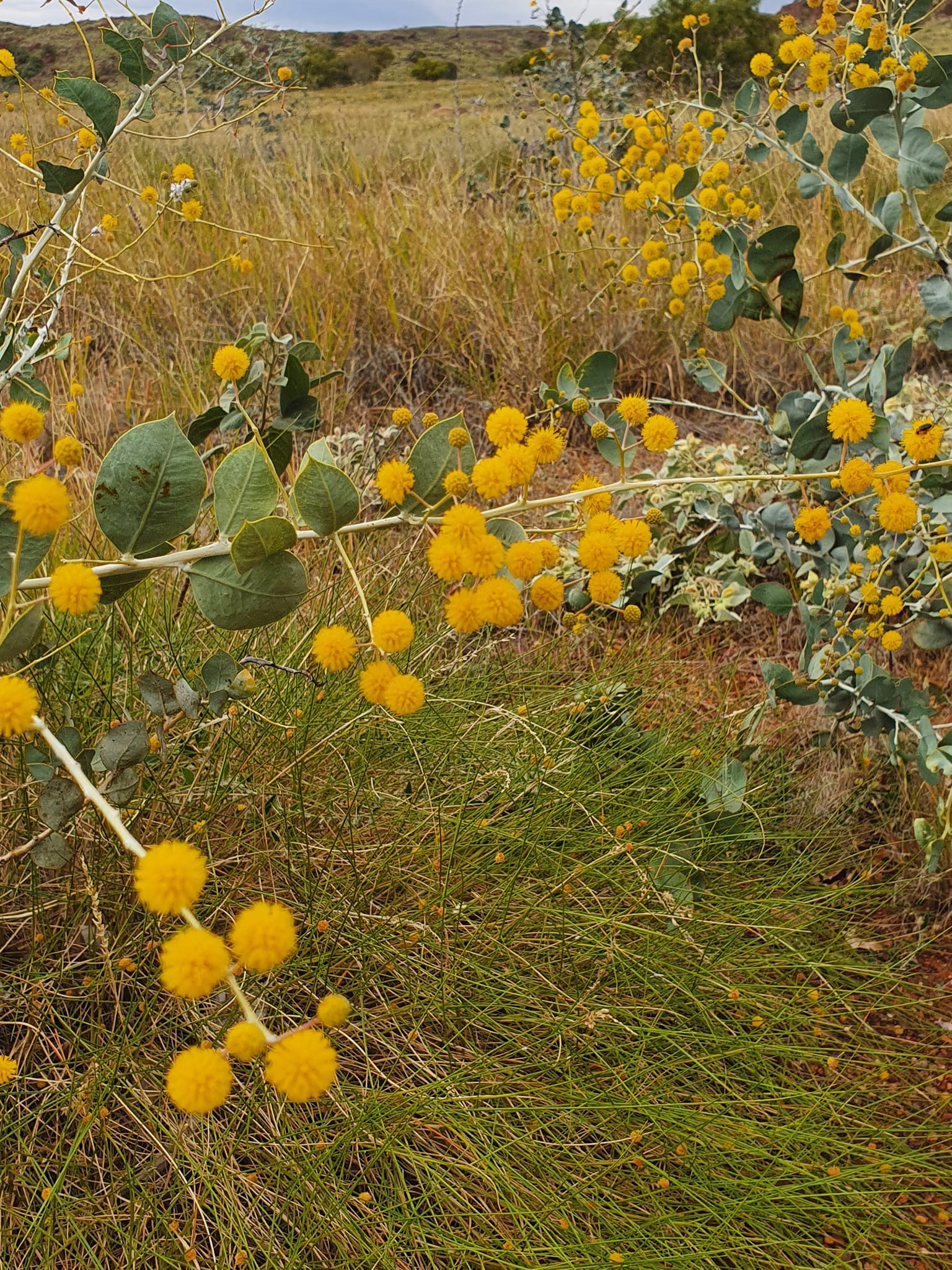
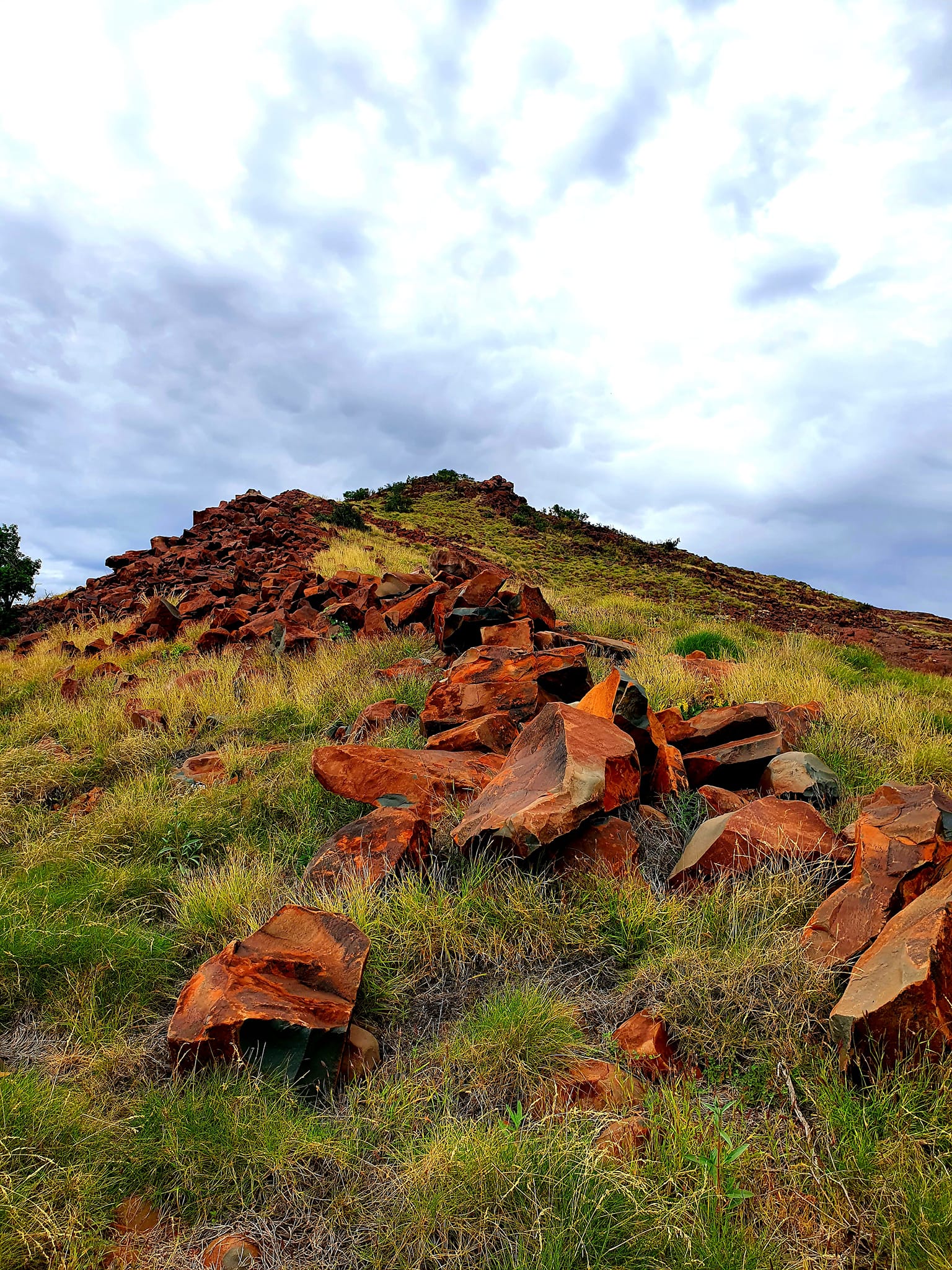
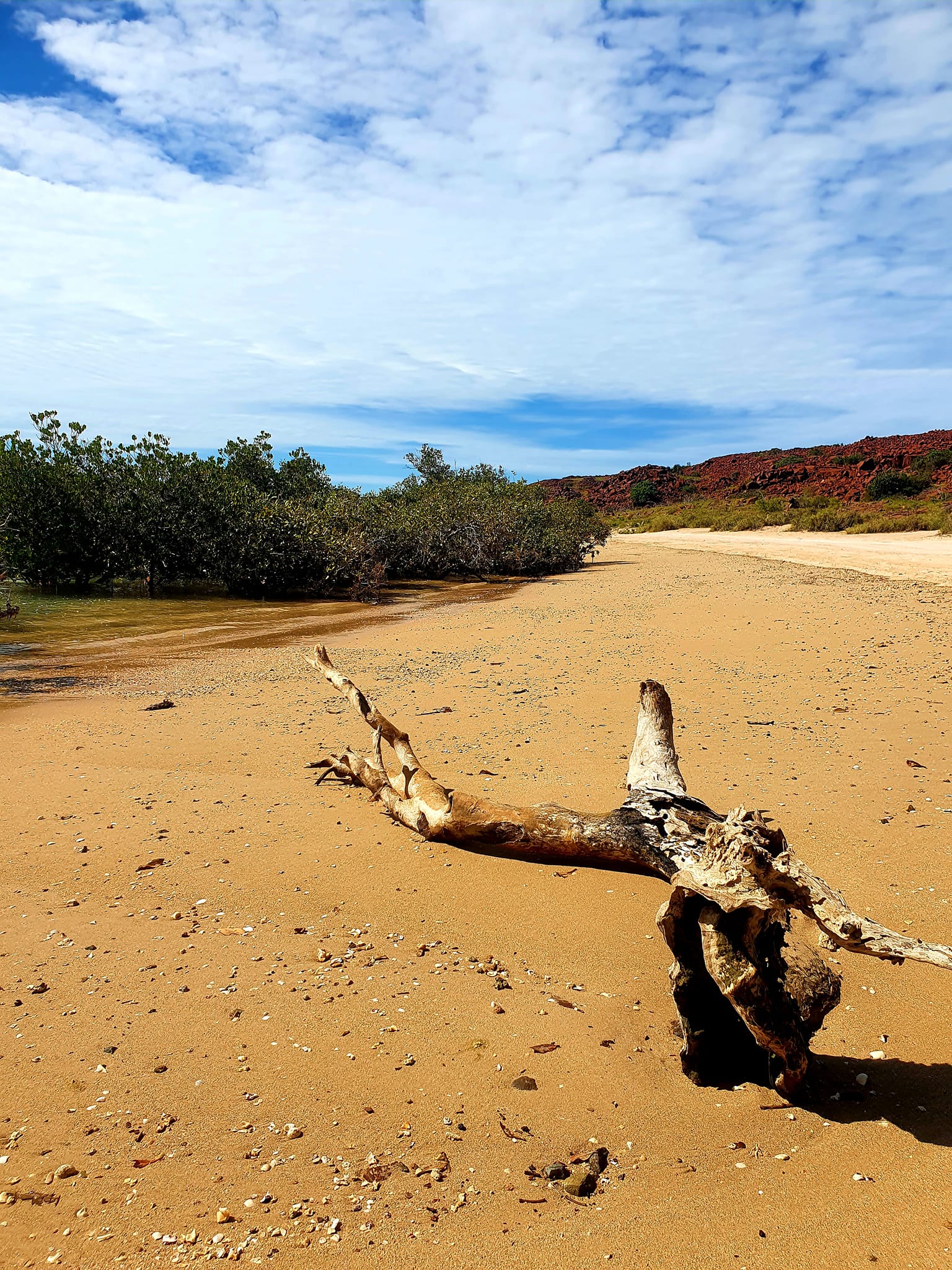
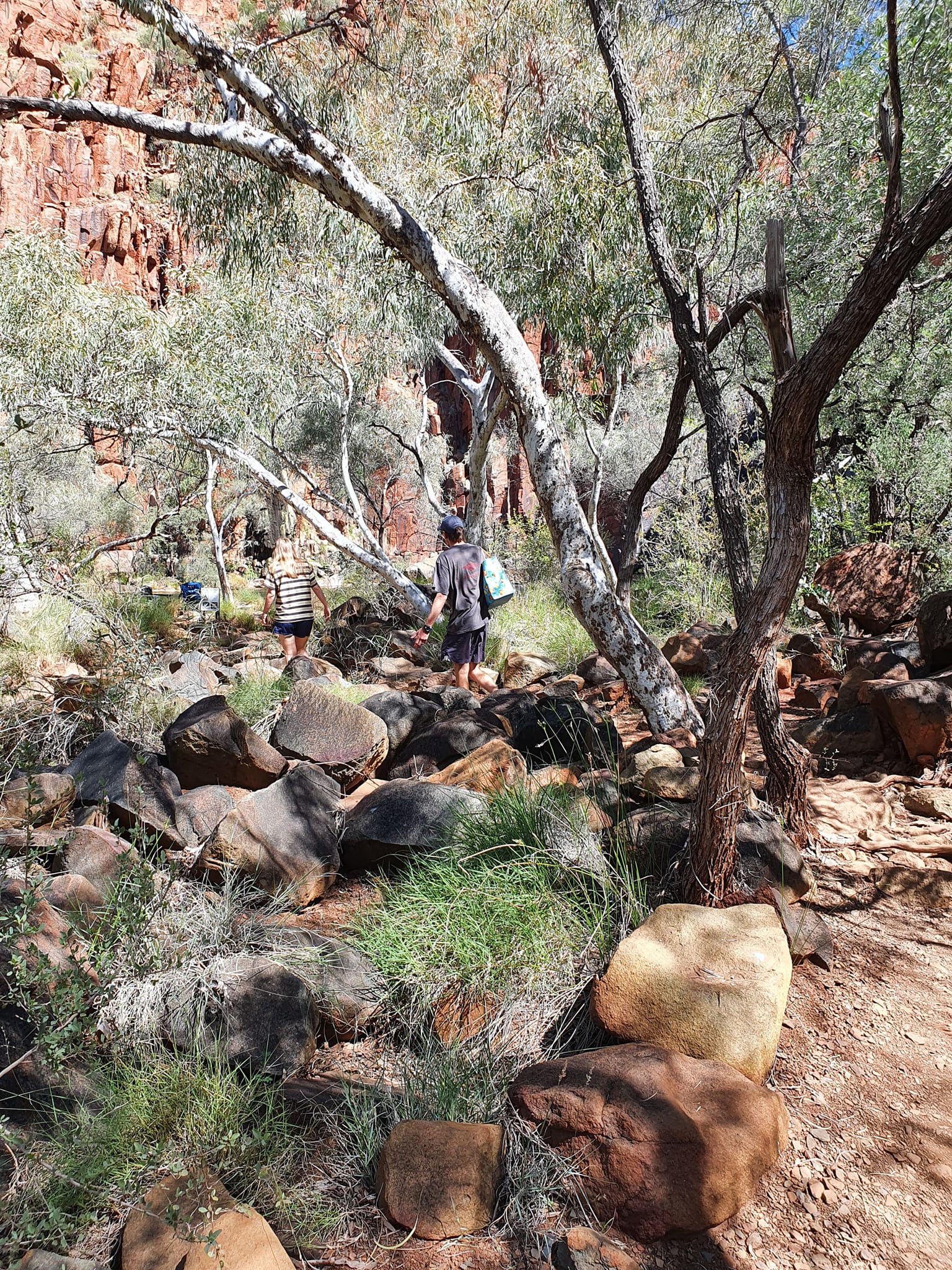
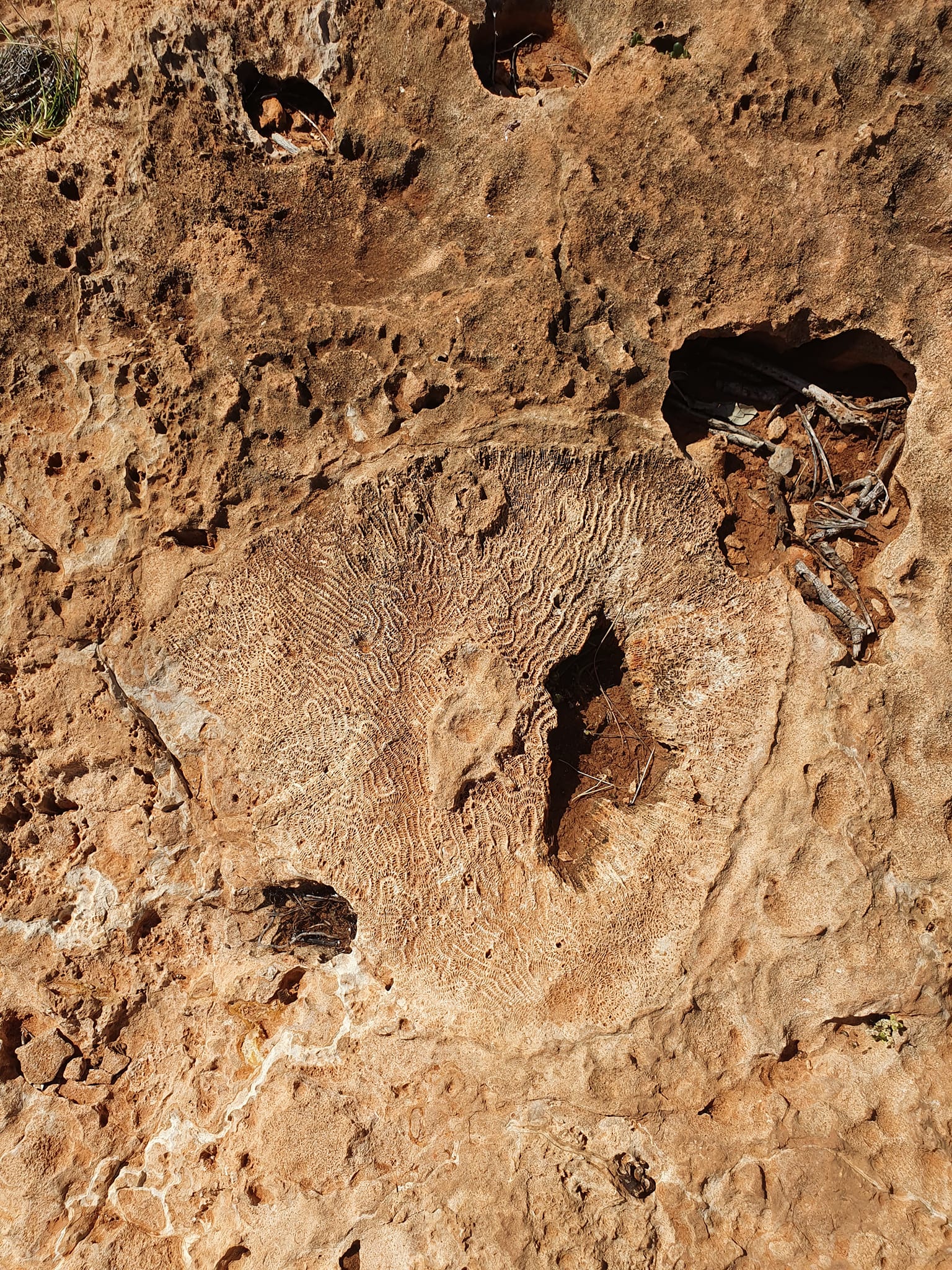
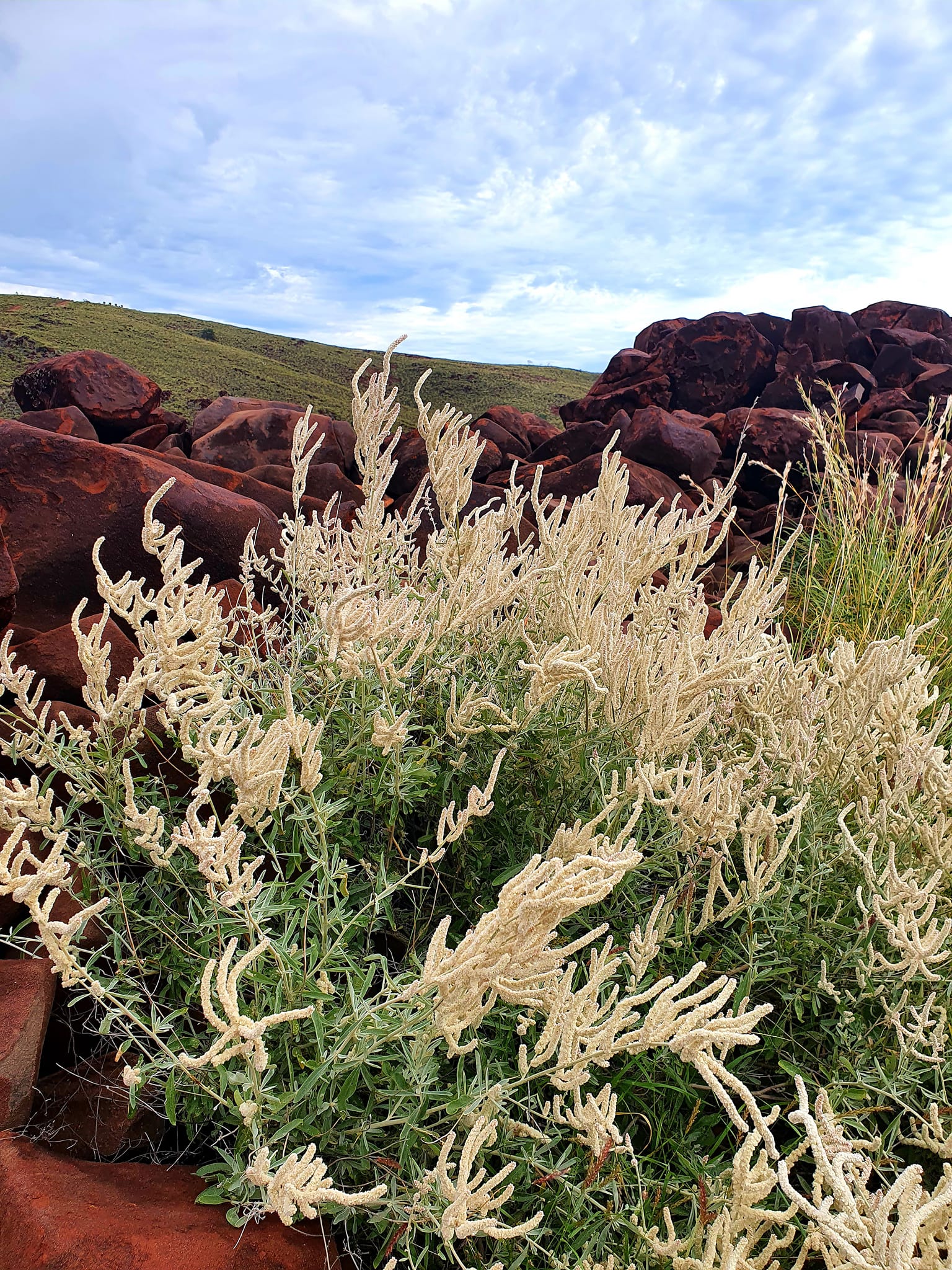
Our daughter and son in law took us boating the next day and we explored the islands of the Dampier Archipelago, a picturesque chain of 42 islands surrounded by a marine park. After anchoring off West Lewis Island we wandered along the sandy beach looking for shells. We found an old turtle nest site and spied a few small shy rock wallabies sheltering in the rock crevices above the beach. After lunch we snorkelled by a coral outcrop and marvelled at the fish as they flashed by.
A couple of dolphins raced our boat coming into Dampier harbour on our return, a magical sight.
The next day we visited nearby Cossack. This historic township was the birthplace of the Pilbara’s pearling and gold industry, site of a turtle soup factory and the port where locally grown wool was shipped to London in the late 1800’s. By 1900 the gold boom was over, the pearling industry had moved to Broome and deeper ports were found elsewhere, and Cossack’s beautiful buildings were deserted. The little town has now been restored and is a wonderful place to wander around, with a museum, café and gallery. Each July the well regarded Cossack Art Awards are held in the Cossack Bond Store, a cavernous and refreshingly cool space.
Early next morning we headed 140km inland to the Millstream Chichester National Park and its welcome tropical oases. Python Pool is a beautiful steep sided freshwater natural swimming pool. We could not resist a quick swim across it from the sandy beach to the base of the waterfall. It was very refreshing! After we dried off we continued on to the next river and walked upstream through giant paperbark trees for 30 minutes to a “secret” waterhole between a series of cascades. Glorious!
We explored the Burrup Peninsula’s Murujuga National Park, home to more than one million petroglyphs dating back thousands of years. There are depictions of long extinct megafauna, animal tracks, thylacines and human figures etched onto the ochre coloured rocks all easily seen from a wheelchair accessible boardwalk. There are also ancient shell middens and grinding stones by the walkway. History indeed! On our way home we stopped to let a rarely seen echidna cross the road.
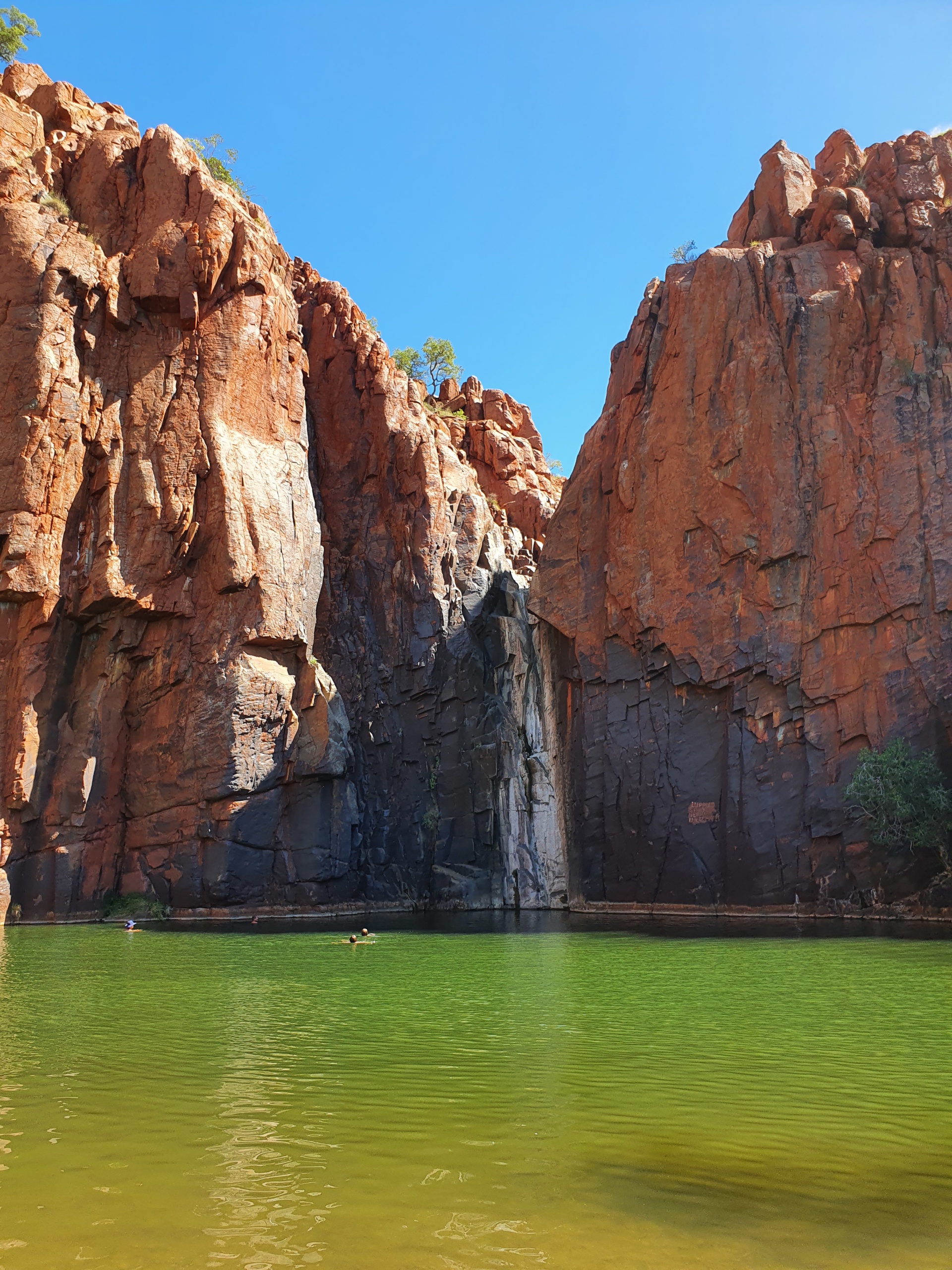
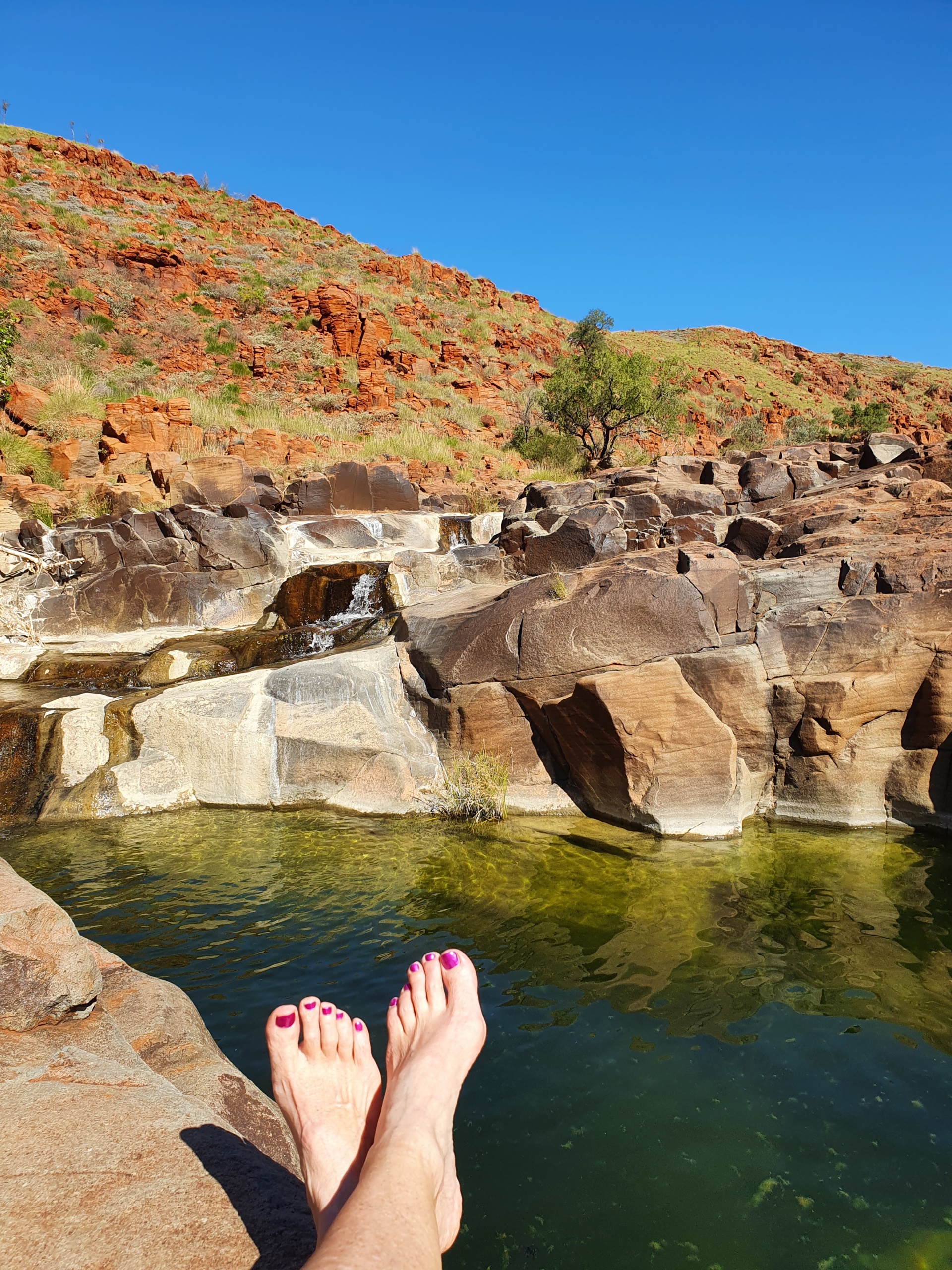
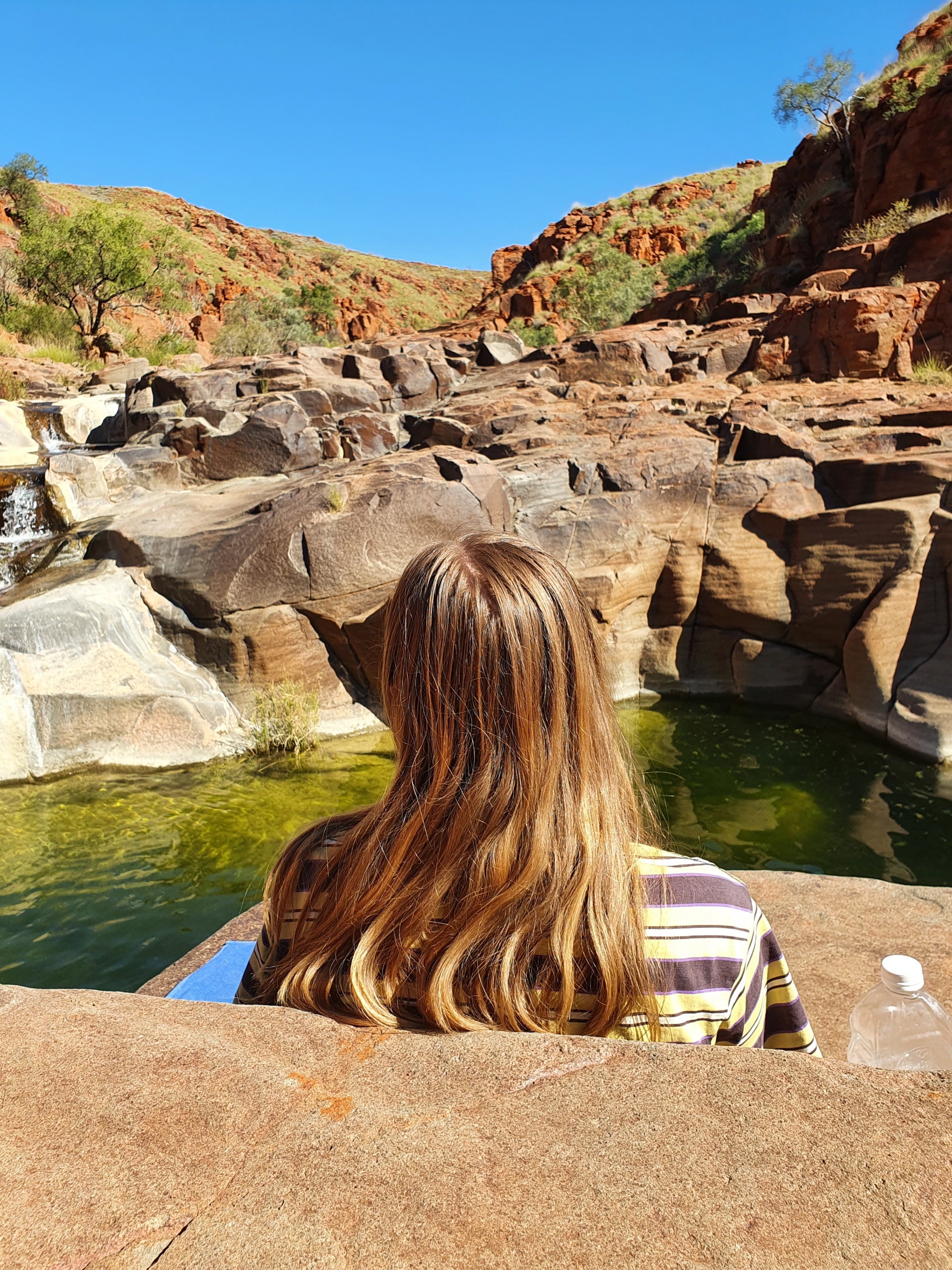
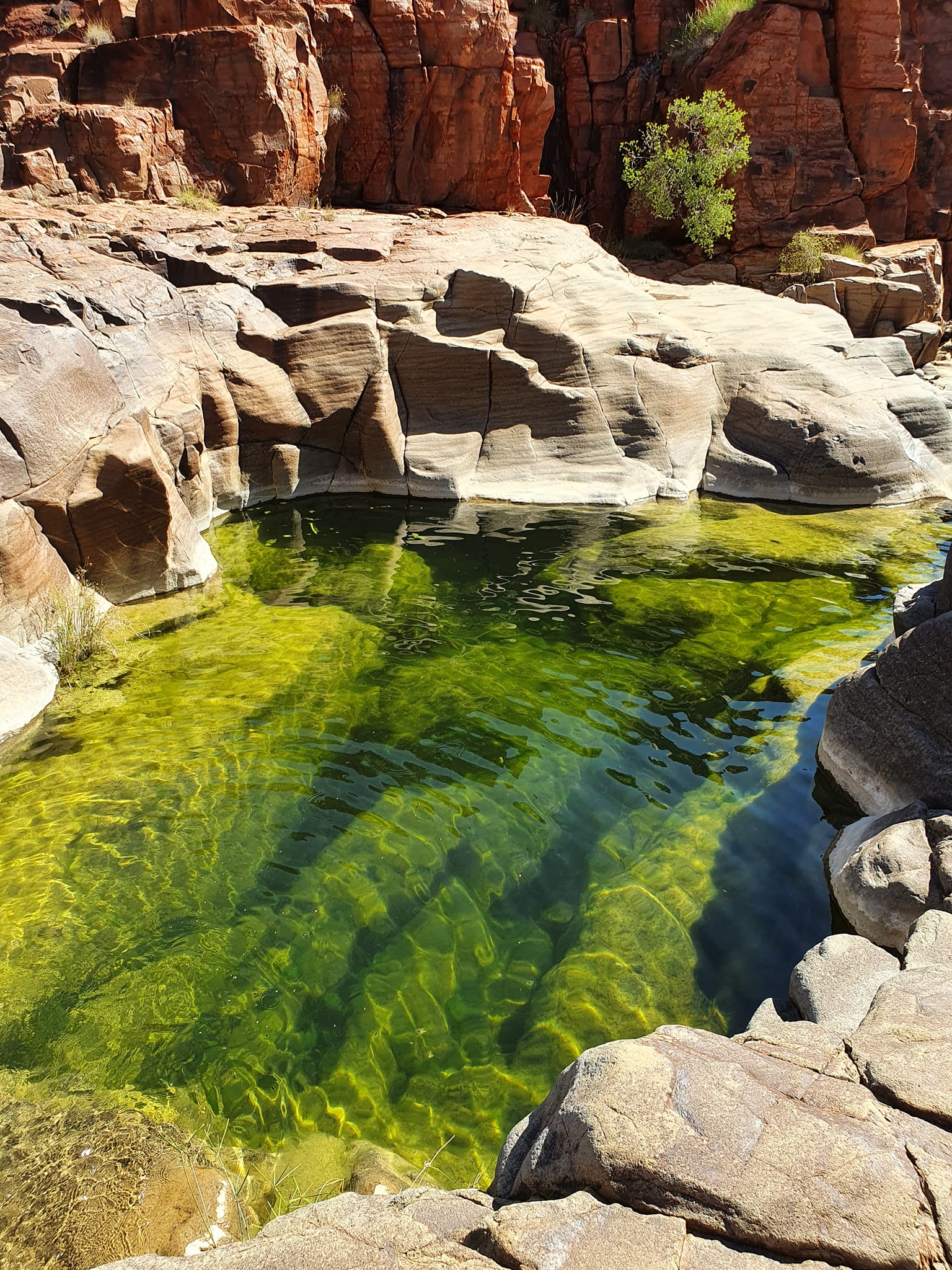
Our next stop was Exmouth, a six hour drive from Karratha. Driving in such a remote region can be daunting. There are two roadhouses and an outback station between the two towns. To be clear- only three toilet stops!! And nothing but red earth, spinifex and the occasional gum lined watercourse in between! We passed a few road trains, four wheel drives and caravans. Behind the hills to the south lurks the occasional iron ore mine, and hawks and kites hover above the highway searching for a meal (roadkill is acceptable!).
Exmouth is the starting point for exploring the Ningaloo Reef, an astoundingly beautiful fringing reef stretching more than 260 km on the western coast of the cape. The reef hosts the biggest migration of whale sharks in the world, where these huge but harmless fish gather each year during winter to feast on krill and plankton. We took a day tour to find one of these solitary beauties and hopefully, to swim alongside it. Spotter planes are used to alert the boats of the whale shark’s location and then the race is on! The whale shark industry in Exmouth is highly regulated and ethical, so only 10 swimmers are allowed in the water with a whale shark at any given time. We were lucky enough to find one, and swim alongside it for a few minutes before it gracefully descended too deep to follow. We also spied dozens of humpback whales, some with calves, on their yearly migration north. A bucket list experience I can now tick off!
We snorkelled at the aptly named Turquoise Bay, a pristine blue lagoon with white sandy beach, swimming in between coral bommies and schools of iridescent fish, including many brightly hued parrot fish and butterfly fish. Giant clams sat on the seabed alongside sea cucumbers, crabs and anenomes. Next on our snorkelling list was the Oyster Stacks, a set of oyster encrusted sea stacks whose surrounds harbour a huge array of coral and sealife. The number and variety of fish was astonishing.
Exmouth caters well for the visitor and we had a huge choice of excellent restaurants and breweries for dinner, which was just as well, as after all that swimming, we were starving! The local seafood did not disappoint.
The Pilbara is a special part of north west Australia, as is its neighbour, the Coral Coast. It’s such a magnificent part of the world for walking, photography, swimming and culture. We just scratched the surface, and can’t wait to go back.
Photos: @Michele Rossetto
